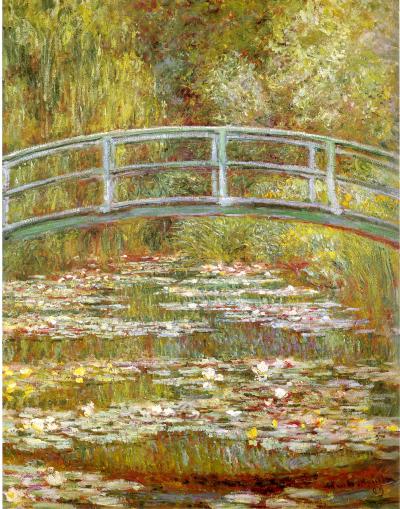Attempting to read up on Agapanthus
becomes an increasingly interesting adventure. I learn not much that is
terribly surprising, but I am a bit stymied in my limited resources. Right now
I have access to one book in front of me and a few that I’ve requested at the
library. It is in that light that I must turn back to what is in front of me:
the paintings and a handful of books and articles, and mine them instead of the
shelves of possibilities that I know exist.
As a relative amateur when it comes to art criticism, and a
virtual expert on talking about whatever comes to mind, this series of blogs
has become something of a quest with me. There is only so much that can be seen
when looking at 3 paintings, no matter how large. There is infinitely more that
can be said about them, or learned about them, or discovered underneath them.
But without ever seeing them, without ever looking at what is in front of your
nose, none of the rest of it is more than mere decoration.
Simon Kelly, in the wording that accompanies exhibit, talks about
the effect that the lack of horizon line has on the painting itself and on the
viewer. It is true – these are works that exist almost entirely outside of the
standard geography of living. There is no bridge, there are no reflections; you
do not know what time of day it is; who is around, if anyone or if there are
any deeper meanings to the shapes and shifting swaths of color in front of you.
I hate to be too pithy, but all of this almost forces the viewer to be
reflected in the paint: we see ourselves in the surface. At yet, the experience
is not disorienting. It is stunning, or at least it can be, but not upsetting,
not to us who are so accustomed to such vast expanses of undefined space.
In Monet at Normandy,
the publication that accompanied an exhibit by that name in 2006 & 2007, it
is possible to follow Monet’s use of perspective and point of view from the
1860’s through to the Cleveland
In other places, the experiments with perspective seem to be
excuses to provide space for the sea or an expanse of beach or sky instead. As
can be seen in his paintings of commercial ships in the port at Le Havre or on the Seine at Rouen Rouen
“While the viewer instinctively constructs spatial relationships
based on scale, position, and color, the artists himself seems no longer bound
by such conventions.(168)” And we do, don’t we? Without thinking about it, we
decide that there is a top and a bottom that are usually related to the top and
bottom of the canvas. We plot the position of shapes and colors not just on the
canvas but in relation to each other in the three dimensional space behind the
canvas or in front of the canvas. We address ourselves in relation to the
paintings: where am I standing in this painting?
I wonder how many of us place ourselves where we have so
often seen M. Monet placed: in the garden, under an umbrella, palate on arm,
cigarette smoldering. Or in his studio with the gigantic canvases leaning
against the walls, as much a part of that space as any other. Perhaps more so.
With so many visitors and so much attention given to the work and the garden
while he was still alive, it seems plausible that there is as much of the life
of the artist’s studio in the layered and floating studies of water lilies and
absent agapanthus in these paintings as any representation of nature’s
variability.
As much of an intellectual exercise as these can be, there
is something excitingly simple and human that can be experienced viewing the
triptych. They were part of a larger work that was intended to honor the end of
World War I and the veterans. In that light, the serenity of this series has
more weight than any horizon line could ever hope convey.
I’ve been looking for pieces of contemporary criticism to
give context outside of the artist and outside of the 20th century.
Of course, the source that I’d love to read is in the St. Louis Public Library
catalog. And equally of course, it is a reference book (non-circulating) of the
Central Library (which collection has been moved entirely to a storage facility
while the building is closed for renovation until summer of next year). So, how
does one get a look at such a thing? The adventure continues.
Lemonades,
Heather, Lynn Federle Orr, David Steel. Monet
in Normandy , Rizzoli , New York



No comments:
Post a Comment